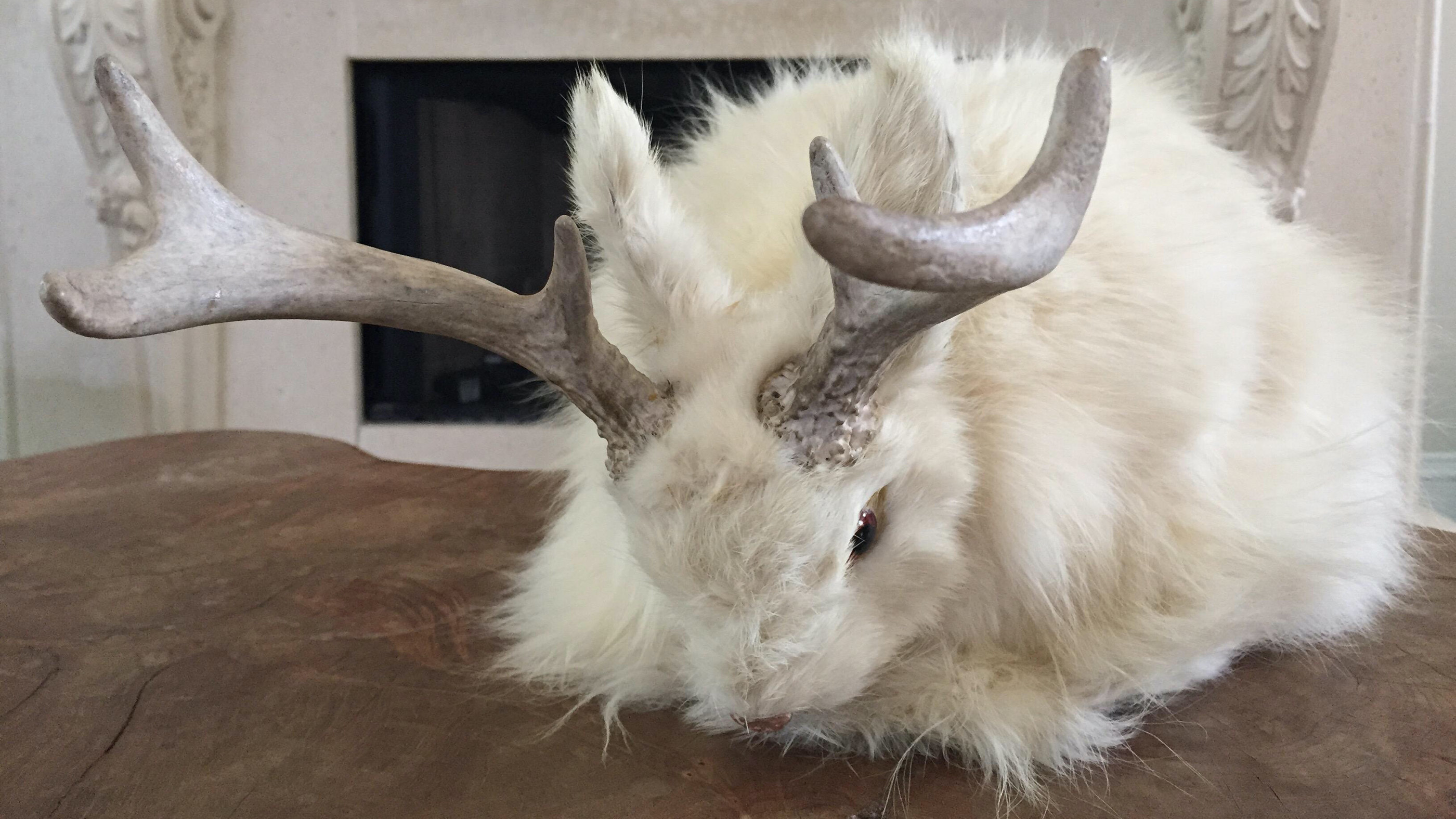
Are jackalopes real?
There's some truth to this myth.

The jackalope, an animal with the body of a jackrabbit and the antlers of an antelope or deer, is a cultural icon of the American West. The image of the creature is sold on all sorts of knickknacks in the region, from postcards to shot glasses. At one point, tourists could even buy taxidermied and mounted jackalopes for $35 or less.
But is the jackalope real, or is it a myth?
Although no such hybrid animal exists, there's an element of truth in the legend, said Michael Branch, a professor of literature and environment at the University of Nevada, Reno and author of the book "On the Trail of the Jackalope: How a Legend Captured the World's Imagination and Helped Us Cure Cancer" (Pegasus Books, 2022).
"It's a mythological creature," he told Live Science. "But it does bear a real relationship to horned rabbits in nature that are stricken with papillomavirus."
Related: What's the difference between rabbits and hares?
Rabbits don't naturally grow horns. But the rabbit papillomavirus can make them do so. Papillomaviruses are common in many species, and each type typically infects members of a specific host species, Branch said. A prime example is the human papillomavirus, or HPV.
When the rabbit papillomavirus infects a rabbit, it can cause the growth of a benign tumor out of its face or head that sometimes resembles antlers or horns. Sometimes, the tumor — made of keratin, the same protein that forms fingernails and hair — grows on other body parts, but it's most common on the head, Branch said. The tumors can become malignant in some rabbits.
Sign up for the Live Science daily newsletter now
Get the world’s most fascinating discoveries delivered straight to your inbox.
However, these growths don't always look like antlers. They're often black and asymmetrical, and not nearly as majestic as the antlers of the jackalope. "It's pretty grotesque, to tell you the truth," Branch said. "Depending on how severe the disease is in the rabbit, it can look pretty horrendous."
In 1933, an American virologist named Richard Shope discovered that the rabbit papillomavirus, shortly thereafter named the Shope papillomavirus, caused infected rabbits to grow features resembling horns, according to a 2015 study in the journal PLOS One. Until then, most scientists didn't believe that a virus could cause cancer. There was some evidence that viruses could cause cancer in birds. But researchers were skeptical, and most certainly didn't think that it could happen in a mammal, Branch said. The horned rabbit proved them wrong.
"It opened up lots of avenues of research to look into what other cancers might be caused by viruses and eventually to work toward the development of a vaccine against them," he said. Specifically, it allowed researchers to begin creating the HPV vaccine, which can reduce the risk of cervical cancer and several other cancers.
Not all rabbits that are infected with the Shope papillomavirus grow horns, just like not all humans with HPV develop cancer. But in the rabbits that do, the disease is often fatal. The horns can disrupt the animals' ability to eat, and they may starve to death, Branch said.
The horned rabbit may have inspired the jackalope myth, but that's far from certain, Branch said. The jackalope originated with two teenage brothers in Douglas, Wyoming. "So far as we know, these young boys invented this thing on their own," Branch said. They were hunters and amateur taxidermists, and they sold their first mounted jackalope to a hotel owner in the 1930s.
This timing is an odd coincidence, Branch said. "Right when these two young boys were creating this joke, this hoax mount of a jackalope in Wyoming, at almost the same moment, Shope was at the Rockefeller Institute [for Medical Research] in Princeton, New Jersey, in his lab, working on horned rabbits."
Originally published on Live Science.

Tyler Santora is a freelance science and health journalist based out of Colorado. They write for publications such as Scientific American, Nature Medicine, Medscape, Undark, Popular Science, Audubon magazine, and many more. Previously, Tyler was the health and science Editor for Fatherly. They graduated from Oberlin College with a bachelor's degree in biology and New York University with a master's in science journalism.









